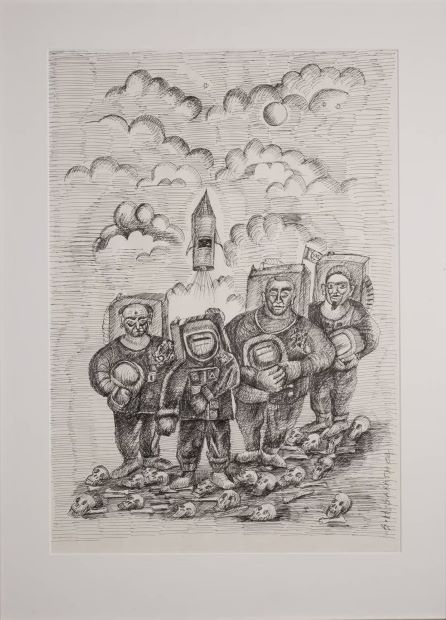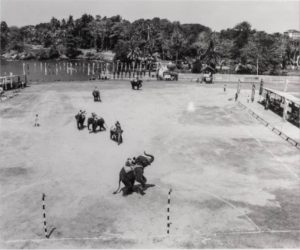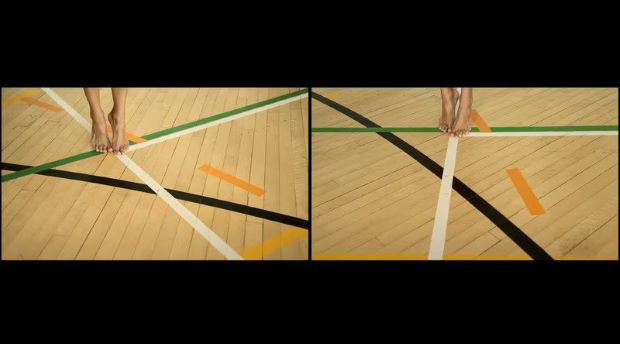Landmark exhibition gives Sri Lankan art a long-overdue voice on global stage
And questions what it means to be a 'foreigner'
By Shaahima Fahim
The term ‘foreigner’ is a loaded one; often synonymous with grim themes of unfamiliarity and otherness, but almost equally with holidaying tourists. Does it define those from different ends of a divide, or the strangers within those very borders?
“What if a foreigner is one who straddles multiple identities, languages and communities without neatly belonging to one?” asks the Museum of Modern and Contemporary Art (MMCA) Sri Lanka of visitors to its current exhibition ‘The Foreigners’
Housed within the lobby of a popular shopping centre in Colombo, MMCA is the sole museum in the country focused on displaying and creating public engagement for Sri Lankan contemporary art.
“People in Sri Lanka are only now starting to understand that contemporary art speaks to the norm of our time in that it reacts and responds to the events and movements we can relate to,” says Sharmini Pereira, chief curator of the museum.
“We hope to serve as a space that people can take pride in as a beacon for recognizing art histories that go beyond the focus on conserving art of ancient eras.”

As Pereira, who guest curated the Abraaj Capital Art Prize for Art Dubai in 2010, walks through the doorless entryway, a group of children sit in a circle, engaged in a creativity-led after-school workshop – a testament to the museum’s ongoing vision of removing the exclusivity often associated with galleries and broadening the audience of modern and contemporary art.
Incidentally, boundaries and borders, both mentally constructed and well-defined, are at the forefront of the current exhibition at the MMCA. The Foreigners brings together the works of 15 contemporary Sri Lanka artists – residents, citizens, those linked by heritage and members of the diaspora, in an attempt to “tackle, resist, reimagine, and remix well-worn tropes of how otherness is categorized and foreignness is perceived”.
“With our physical space in Colombo, we’re of course primarily trying to engage with a local audience, but more pedagogically,” explains Sandev Handy, lead curator of The Foreigners. “We’re trying to shift the conversation and introduce art as a learning experience with possible opportunities for social transformation, for reflection, for learning outside of just the art itself.”

A visual repertoire that poses existential questions on home and identity, the mixed media works of various artists, including Arjuna Gunaratne, Danushka Marasinghe and Dinelka Liyanage, are tied together in thematic harmony with Pereira and Handy at the helm.
Right from the outset, Stephen Champion’s The Tourist casts aside monochromatic notions of belonging in his photograph of a bathing suit-clad vacationist. Champion himself is a British-born long-term resident of Sri Lanka, begging the question of the necessity of nationally inscribed identity vs. self-defined anchorage in staking claim to one’s “home”.
With The Foreigners, it’s hard to not relate in some way to the transcendence of lived experiences, and eventually succumb to a breaking down of one’s own mental barriers of long-held perceptions of the physical borders that have so long attempted to both mould, confine and restrict.
“This show and the way people have been resonating with it is really just a stake in the ground for the many other related conversations we could be having on the topic,” says Handy of the exhibition, which was two years in the making. “There’s still a long way to go, but we hope that this is a start in inviting people to examine, question, and even dismantle dominant cultural narratives on identity and belonging.”
Revealing the interlacing of humanity and art through a rich multiplicity of personal narratives, each piece juxtaposes the other in an attempt to synchronize the sentiments behind the inadequacy of the diasporic experience with the profound alienation of a returnee; the estrangement of an outsider-insider with the instability of a migratory existence.

Housed within a glass casing, Hema Shironi’s A Bundle of Joy, for instance, makes reference to her experience of constantly moving within a country through migration and displacement; the many landscapes of her temporality embroidered on fabric bindles, articulating the perpetual feeling of rootlessness and internal disconnect.
Visual artist Nina Mangalanayagam, who lives in Sweden, presents her video installation Balancing Act, which uses sport as a control device to tackle the disconcertedness that comes with cultural hybridity, and with photographic series Homeland reflects on her experience as a second-generation immigrant watching a parent attempt to over-integrate into a society so far from his own. With Lacuna, she is “attempting to imitate a so-called Indian head nod, frequently used within my Tamil family, but which I cannot do,” explains Mangalanayagam. “Body language is inherited and in my case this line is broken.”
“I have worked with the idea of hybridity for many years which is grounded in the in-between space of fixed identities from where these can be questioned and dismantled,” she adds. “My background is a mix of nationalities and ethnicities and I, for example, noticed that I was treated differently in Sweden when I was with my Tamil father, in comparison to if I was with my Danish mother. This made me acutely aware from an early age of how lives are experienced differently due to skin colour and stereotypes.”
Shyama Golden’s piece Rooms II – a fitting conclusion to the show-– converges Sri Lankan folklore with the mundanity of everyday life, hinting at the underlying feeling of strangeness under very ordinary circumstances. “I think at times, our stories have been seen as ‘too esoteric’ or niche to be relatable to a global audience,” says the artist, who lives in Los Angeles. “But I believe that there are universal human fears and desires embedded within the particulars of every cosmology.
“I can imagine a future with greater global reach for South Asian artists drawing from their own cultures, but also from other cultural influences besides our own,” she adds.

Part of the video work from The Foreigners will also be displayed at The Photographers’ Gallery in London come October, as a way of carrying these conversations across the waters, through Sri Lankan art.
“Twenty years from now, we aim to be one of the crucial voices behind bringing to the fore contemporary Sri Lankan art in discourse on art from the Global South, and also as a distinctive movement deserving of wider exposure and recognition in the international art space,” says Pereira.
-The Foreigners is on show at the MMCA in Colombo until October 22. More information check mmca-srilanka.org. This article was originally featured on thenationalnews.com
Pix – MMCA Sri Lanka



Comments are closed, but trackbacks and pingbacks are open.